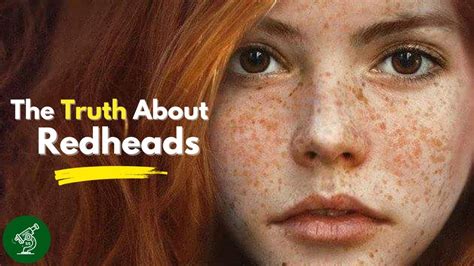Introduction
Red hair, a striking and captivating trait, graces only a small percentage of the global population. This fiery-hued attribute has been the subject of fascination, curiosity, and even prejudice throughout history. In this comprehensive article, we delve into the captivating world of red hair humans, exploring their unique genetic makeup, cultural significance, and associated health considerations.

Genetics of Red Hair
Red hair is caused by a rare genetic mutation in the MC1R gene, which is responsible for producing melanin, the pigment that gives hair its color. The mutated MC1R gene leads to reduced production of eumelanin, the dark pigment, resulting in the accumulation of pheomelanin, the red pigment. Inherited as an autosomal recessive trait, red hair requires both parents to carry the mutated MC1R gene.
Prevalence of Red Hair
Globally, only about 1-2% of people have natural red hair. The highest prevalence is found in Scotland and Ireland, where up to 13% of the population sports this fiery mane. Other regions with relatively high frequencies include northern and central Europe, as well as parts of North America and Australia.
Cultural Significance of Red Hair
Throughout history, red hair has been associated with a wide range of cultural beliefs and stereotypes. In ancient Greece and Rome, redheads were often considered to be fiery and passionate, while in medieval Europe, they were sometimes feared and persecuted as witches or heretics.
In the 19th century, red hair became associated with beauty and glamour, thanks to the iconic actress Lillian Gish. Today, red hair is generally viewed as a unique and attractive trait, celebrated in art, literature, and popular culture.
Health Considerations for Red Hair Humans
Red hair humans have a few distinct health considerations:
- Sun Sensitivity: Redheads have less eumelanin, which makes them more susceptible to sun damage. They are at increased risk of skin cancer and should take precautions such as wearing sunscreen and limiting sun exposure.
- Vitamin D Deficiency: Melanocytes, the cells that produce melanin, also produce vitamin D. As redheads have fewer melanocytes, they may be at higher risk of vitamin D deficiency.
- Higher Pain Tolerance: Studies have suggested that redheads may have a higher tolerance for pain compared to people with other hair colors. The exact reason for this is still under investigation.
Common Myths and Misconceptions about Red Hair
- Myth 1: Redheads are all Irish. Although Ireland has a high prevalence of red hair, only a small percentage of redheads worldwide are Irish.
- Myth 2: Red hair fades with age. While hair color may change slightly over time, red hair does not typically fade significantly.
- Myth 3: Redheads have a bad temper. There is no scientific evidence to support the stereotype that redheads have a fiery personality.
FAQs about Red Hair
- Is red hair a sign of a genetic disorder? No, red hair is not a genetic disorder. It is a natural genetic variation.
- Can red hair be damaged by hair dye? While hair dye can change the color of red hair, it can also damage the hair if used incorrectly. It is important to follow the manufacturer’s instructions and use a dye that is specifically designed for red hair.
- Is there a cure for red hair? No, there is no cure for red hair. It is a natural genetic trait.
- Can red hair be passed down to children? Yes, red hair can be inherited from parents. If both parents carry the mutated MC1R gene, they have a 25% chance of having a redheaded child.
- What is a “strawberry blonde”? Strawberry blonde is a hair color that is a mixture of red and blonde. It is caused by a combination of both eumelanin and pheomelanin pigments.
- Why are redheads often depicted as fictional characters? Red hair is a visually striking trait that can make characters more memorable. It has been used to create iconic characters in literature, film, and other forms of media.
Market Opportunities for Red Hair Care and Beauty Products
The unique needs of red hair humans present a significant market opportunity for the beauty industry. Tailored hair care and beauty products specifically designed for redheads are in high demand.
- Sun Protection: Redheads need to protect their hair and skin from sun damage. Sunscreens and hair products with UV protection are essential.
- Color Maintenance: Red hair can fade over time. Products that enhance and maintain the vibrancy of red hair are highly sought after.
- Hydration: Red hair is often drier than other hair colors. Moisturizing shampoos, conditioners, and hair masks are necessary to keep it healthy and hydrated.
Conclusion
Red hair humans are a captivating and unique population with a rich history and distinct genetic makeup. Their fiery locks have been the subject of fascination, cultural significance, and even health considerations. As we continue to unravel the mysteries of red hair, we can appreciate its beauty and celebrate its diversity. By understanding the needs and wants of red hair humans, the beauty industry can create innovative products that cater to their specific requirements.
